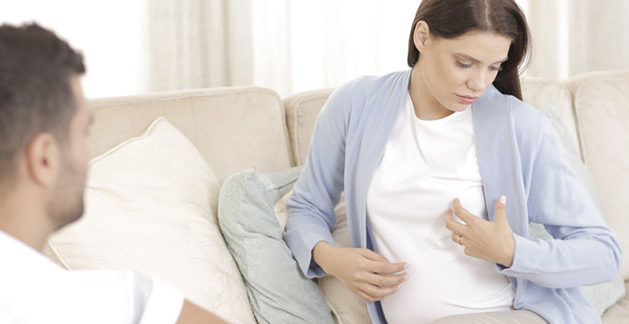What if I need a caesarian section?

In some cases, to avoid putting you or your baby at risk, you might need to go through a C-section to deliver your child. Find out more on this procedure below.
Some women find out they need a caesarean section long before they give birth, but for others the decision might not be made until they go into labour. It’s most likely that you won’t need one, but if you do, don’t panic. It really is a very straightforward procedure that’s over within an hour. Here you’ll find out about caesarean sections and why you might need one. If you have any questions please speak to your doctor, or contact our team.
Why might I need a caesarean section?
When doctors feel that a normal delivery will put you or your baby at too great a risk they will advise you to have a caesarean section. These are some of the reasons why they might come to such a decision:
- Placenta praevia; when the placenta is low in your uterus or blocks your baby’s exit.
- You are carrying three or more babies, or if you are having twins and they aren’t both head down.
- Your baby is considered too big to come through the pelvis.
- You have severe high blood pressure or other illnesses such as preeclampsia.
- Your baby’s health is threatened and they need to get your baby out quickly.
- Your baby is lying breech, or another way that could prevent a normal birth.
- Cord prolapse; when the umbilical cord falls forwards so your baby cannot be delivered easily.
- You have an outbreak of genital herpes, which can be passed on to your baby through a vaginal birth.
What happens during a caesarean section?
The procedure may vary slightly from hospital to hospital, but here is a general guide to what will happen.
You’ll meet your anaesthetist, who’ll chat with you about your medical history and answer any questions you might have. They’ll take some blood and ask you to sign a consent form. You’ll be given an antacid to neutralise the acid in your stomach and an intravenous drip will be set up in your arm so that doctors can keep an eye on your fluid levels and give you extra pain relief if you need it.
Your anaesthetist will then give you a local anaesthetic (an epidural or spinal block) and you’ll have a catheter to empty your bladder (which will stay in place until around 12-24 hours after the op). You will also have some of your pubic hair shaved to clear the area for the incision.
Once the anaesthetic takes effect, the doctor will begin the procedure which involves making an incision allowing them to reach your baby, who will be in a bag of water. The doctor will break the membrane and bring your baby into the world. It’s over very quickly and all you should feel is a little pressure, nothing more.
Unless you need a general anaesthetic or it’s a real emergency, your birth partner can stay with you from start to finish. You may even have your choice of music playing during your caesarean section!
What happens after your baby is born?
Your new baby will be taken to a “resuscitaire”, which is a small, warm bed where they can be checked over by the paediatrician. Once the paediatrician is happy your baby is healthy, they’ll let you or your partner have a cuddle! Once your placenta is delivered, your surgeon will sew up your uterus and then your abdomen with a neat line of stitches. This takes about 30 minutes. You’ll then be taken back to the labour ward where your doctor will help you with breastfeeding your baby.
Recovering from your caesarean section
In most cases you’ll be up and about in 24 hours and out of hospital within five days. You’ll be given pain relief to help you get up and about, but it takes around 6 weeks to recover from a caesarean section, so you’ll need a little extra help at home so you can rest up and concentrate on your baby and your own recovery.
Remember, just because you’ve had a caesarean section this time, it doesn’t mean that your next childbirth will end the same way. About 70% of women who try for a normal delivery after a caesarean section succeed.





